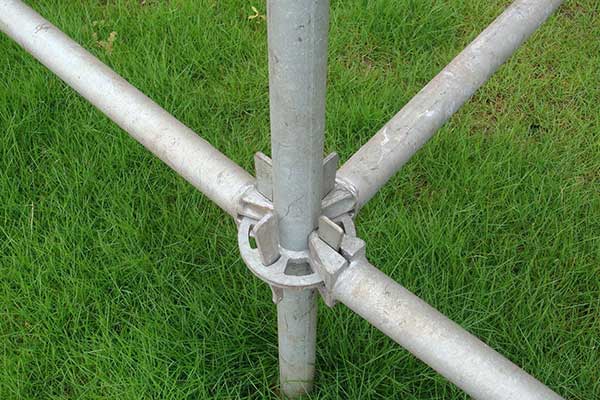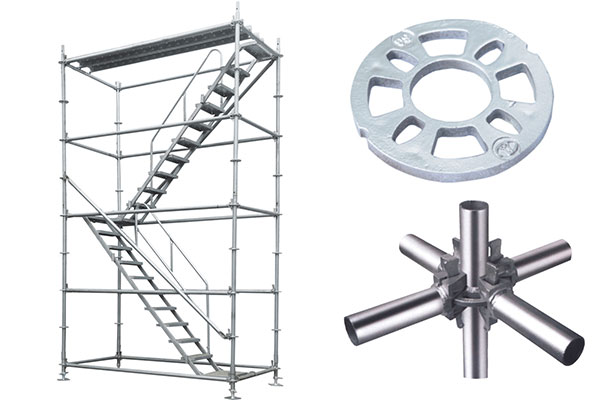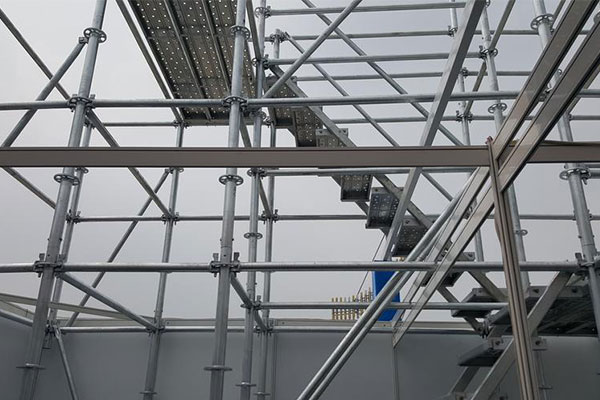What is Ringlock System Scaffolding? A Complete Guide
Scaffolding is a critical component in construction, offering support for workers, materials, and tools during building or maintenance projects. Among the various types of scaffolding, Ringlock system scaffolding has become increasingly popular due to its versatility, safety features, and ease of assembly. In this article, we’ll explore what Ringlock scaffolding is, how it works, and why it is a preferred choice for many construction professionals.

What is Ringlock Scaffolding?
Ringlock scaffolding is a modular type of scaffolding system designed for maximum flexibility and strength. Its defining feature is the unique ring-shaped rosette—a central hub with up to eight connection points. These rosettes allow for multiple components to be connected at various angles, providing high adaptability to different construction needs. The Ringlock system is constructed using vertical standards and horizontal ledgers, which are secured by wedge locks for a sturdy and reliable structure.
Key Components of Ringlock Scaffolding
- Rosette (Central Ring): The heart of the Ringlock system. Located on the vertical standards, the rosette allows connections from up to eight directions, providing flexibility to accommodate complex architectural designs.
- Standards (Vertical Supports): These vertical tubes provide the main structural support, with rosettes positioned at regular intervals.
- Ledgers (Horizontal Supports): The horizontal members connect to the standards, forming the basic framework for the scaffolding platform.
- Diagonal Braces: These are used to provide additional stability to the scaffolding, especially in tall structures.
- Wedge Connectors: A simple yet strong connection mechanism that secures ledgers and diagonal braces to the rosette with a hammer, ensuring quick assembly and disassembly.
- Base Jack (Adjustable Base Plate): Used to level the scaffolding on uneven surfaces, ensuring a stable foundation.

How Does Ringlock Scaffolding Work?
Ringlock scaffolding is designed for easy assembly and disassembly. Workers can quickly connect vertical standards, horizontal ledgers, and diagonal braces to the rosette using wedge connectors. This makes Ringlock scaffolding faster to erect compared to traditional tube and clamp systems, significantly reducing labor costs. Moreover, the modular nature allows for flexibility in height and configuration, making it suitable for complex structures.
The scaffold system’s adaptability is one of its standout features. Thanks to the 360-degree connection capability of the rosettes, it can be used in a variety of construction projects, from building facades and bridges to industrial facilities and more intricate designs.
Advantages of Ringlock Scaffolding
- Versatility: The ability to connect components at various angles makes Ringlock scaffolding ideal for complex or unconventional structures. Whether for buildings, bridges, or industrial applications, Ringlock scaffolding can adapt to diverse requirements.
- Ease of Assembly: Ringlock scaffolding can be assembled quickly and with fewer tools than traditional scaffolding systems. This results in significant savings in labor time and costs.
- Enhanced Safety: The Ringlock system is known for its robustness and stability. Its interlocking design minimizes movement and ensures a secure platform for workers. Additionally, its modular nature allows for better organization and safer working environments, reducing the risk of scaffolding failure.
- Durability: Made from high-strength materials, often galvanized steel, Ringlock scaffolding is built to withstand heavy loads and harsh weather conditions. This makes it ideal for both short-term and long-term construction projects.
- Cost-Effectiveness: While the initial investment in Ringlock scaffolding may be higher than traditional systems, the savings in labor, time, and the extended life of the equipment make it a cost-effective choice in the long run.

Applications of Ringlock Scaffolding
The versatility and adaptability of Ringlock scaffolding make it suitable for a wide range of applications, including:
- Building construction: Both low-rise and high-rise buildings benefit from the flexibility and ease of use.
- Bridges and Infrastructure: Complex and large-scale projects like bridges require strong and adaptable scaffolding systems.
- Industrial projects: Ringlock scaffolding is commonly used in oil and gas refineries, power plants, and other industrial applications where irregular structures are common.
- Events and Staging: The system is also used in the construction of temporary stages, platforms, and seating for events.
How to Maintain Ringlock Scaffolding?
Proper maintenance of Ringlock scaffolding is essential for ensuring its longevity and safety. Regular inspection of all components—such as checking for corrosion, damage, or loose connections—is critical. Cleaning the scaffolding after each use and storing it in a dry environment will also help extend its life.
Conclusion
Ringlock system scaffolding is a versatile, durable, and efficient solution for a variety of construction and industrial applications. Its modular design and ease of assembly make it a preferred choice for many contractors looking to enhance safety, reduce costs, and improve project timelines. Whether you’re working on a small building or a large-scale infrastructure project, Ringlock scaffolding offers the adaptability and strength needed for success.
FAQs
Yes, Ringlock scaffolding is considered highly safe due to its robust design, which minimizes movement, ensures stability, and provides a secure platform for workers.
Yes, Ringlock scaffolding systems come with adjustable base jacks that allow for leveling on uneven surfaces, ensuring a stable and secure setup.
Yes, Ringlock scaffolding is strong and adaptable enough for high-rise construction projects, providing safe access at various heights.
With proper maintenance, Ringlock scaffolding can last many years. The use of galvanized steel adds to its longevity and resistance to corrosion.
Yes, its modular nature allows for customization, making it suitable for both simple and complex construction needs. The 360-degree rosette connection enables flexibility in design.
